
Few marketing tactics stand the test of time, but word-of-mouth marketing is an outlier. Today, with both companies and consumers taking up more space online due to COVID, word-of-mouth marketing has transformed into something more powerful than ever – creating threats and opportunities online for brands. And advanced social listening has been a game-changer. It harnesses the massive amounts of data consumers generate to extract actionable and relevant real-time insight. Those with social listening capabilities in place came through the other side of the pandemic relatively unscathed.
It makes sense. According to TEKsystems 2021 State of Digital Transformation Report, “There is a direct connection between success during the crisis and the maturity of an organization’s digital transformation before the pandemic.” But not all ‘digital maturity’ models are created equal.
In an age where ‘speed to insight’ is becoming table stakes, being first with something is no longer good enough. Accuracy of social listening insight and understanding the context surrounding this insight is equally crucial. And in this piece, we will share how to win by both measures (speed and accuracy) with social listening, spanning various use cases. And we’ll also share ways to evaluate the many social listening options available.
What is social listening?
Social listening is so much more than what brands expect. It takes you beyond surface insights to actionable intel. What does this mean, exactly? Social listening helps brands capture consumer needs and create the products and solutions that consumers want – often before the idea is even fully formed. Social listening gives brands a boost toward solidifying their place in whatever market category they inhabit by digging into details you wouldn’t have discovered – or even considered – otherwise.
For example, while it’s great to know how many times your brand name is mentioned online, that information by itself does nothing. This is where social listening comes in. You may have a glimpse of what is being said about your brand, with a few cherry-picked social snippets captured by someone on your team, but the entire context powering those mentions is missing. With the right social listening lens applied, online transforms from a place where you nebulously measure success by counting mentions month over month to capturing the most impactful conversations that reveal consumers’ deepest desires, emerging trends and competitor challenges while training you to anticipate market movements.
There are countless use cases for social listening. The most popular, as it requires lots more space to detail fully, is seen in The Ultimate How-To Guide for Social and Media Analytics!
Why do brands and agencies use it?
Brands and agencies use social listening because it shows them precisely what consumers want, where any market is headed, and endless ways to connect with those consumers meaningfully – and all while arriving at that ‘market destination’ early, if not first. And depending on whether businesses use social listening or not, we see two very distinct scenarios play out.
Not using social listening is like having a journey rigidly mapped out, down to the timing for bathroom breaks. No one has updated the route for new construction, nor have they accounted for inclement weather and other travel restrictions. The brand charges forward sans social listening, and you’ll measure the sum of your efforts at the end to see how it went.
Others, those savvy social listeners, have the destination firmly in mind but rely on real-time GPS-powered intel guiding them as they navigate any number of potential paths while alerting them to worthwhile stopovers and side-stepping both noisy distractions as well as dangerous detractors that pop up along the way. They use social listening to measure and pivot as they go.
You can imagine the shape each brand is in when it reaches that destination, assuming the former even arrives. This past year, we saw many break down on the side of the road and stay there. The rest took advantage of advanced AI-powered social listening in its many use cases to win, including:
Brand Health & Perception –
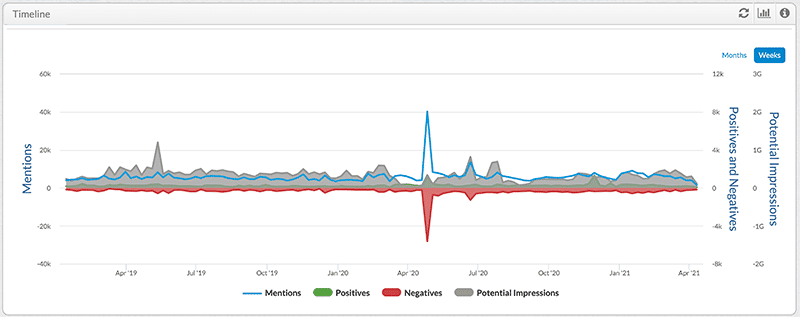
Screenshot from NetBase Quid
Brand perception depends on how consumers experience your brand – and this reality rarely lines up assumptions. Monitor consumer experience data gleaned from every touchpoint and social web resource (blogs, comments, forums, reviews), as well as media mentions, to track brand sentiment and conversation volume over time. Identify where you’re doing well, challenges and how to message out to either amplify or reshape perception with social listening.
Campaign Strategy –
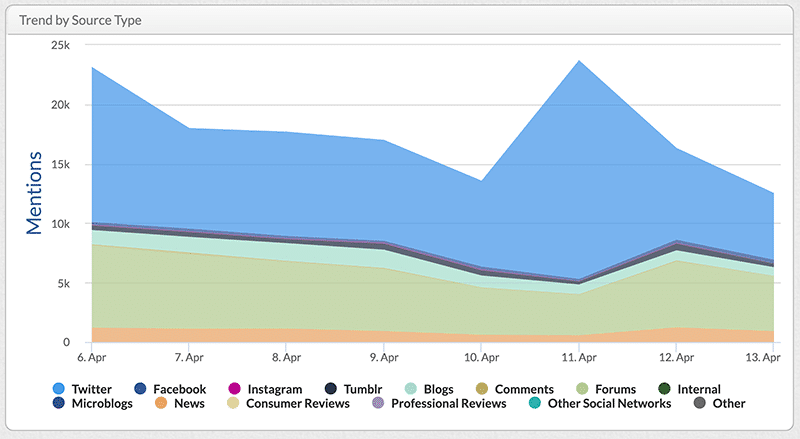
Screenshot from NetBase Quid
Create engaging campaigns with analytics-fueled strategies and messaging that connect emotionally with your consumers. Develop a content strategy aimed at uncovering where your target customers are most engaged, who they’re listening to and where – and develop content that resonates best to share on those sites, taking care to include user-generated content in that mix. And then revamp messaging mid-stride based on engagement.
Product Innovation & Launch –
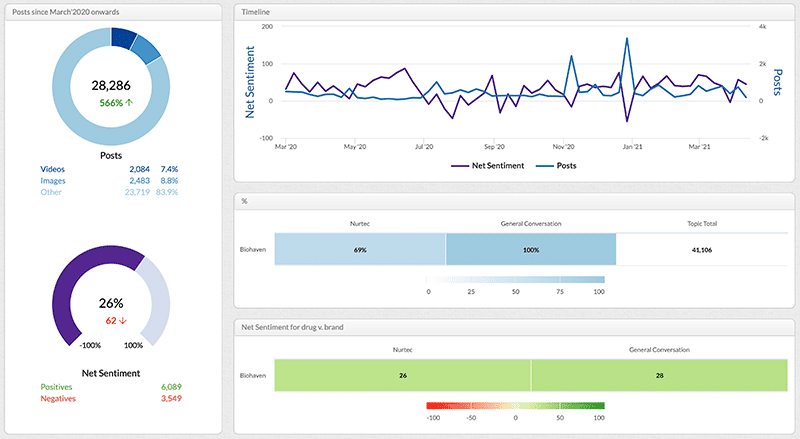
Screenshot from NetBase Quid
After conducting thorough market, competitive and risk analyses, brands make informed strategic decisions around product innovation and launch tactics with social listening. They’ve narrowed down whitespace opportunities and understand the target audience, with a nuanced, yet flexible, launch plan mapped out.
Trend Analytics –
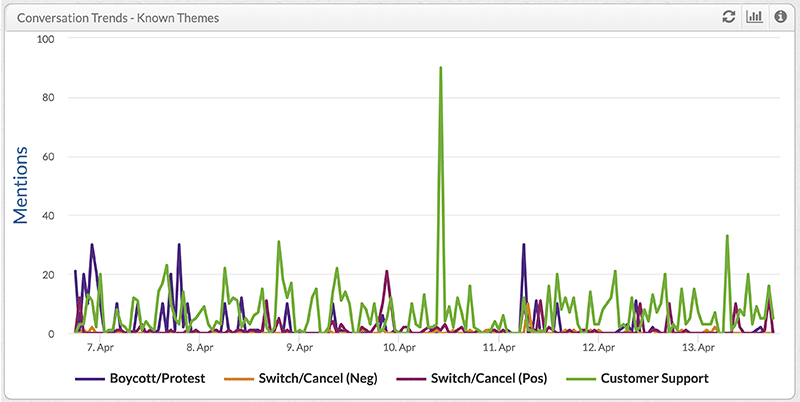
Screenshot from NetBase Quid
Identify emerging trends and track which existing trends are increasing or decreasing in volume. Some may shift a brand’s focus to an adjacent category and reveal opportunities they would never have explored otherwise. And the ability to contextually visualize broad topics with social listening and zoom in for cutting-edge ideas and hidden gems over time allows brands to reprioritize and pivot ahead of the curve.
Mergers & Acquisitions –
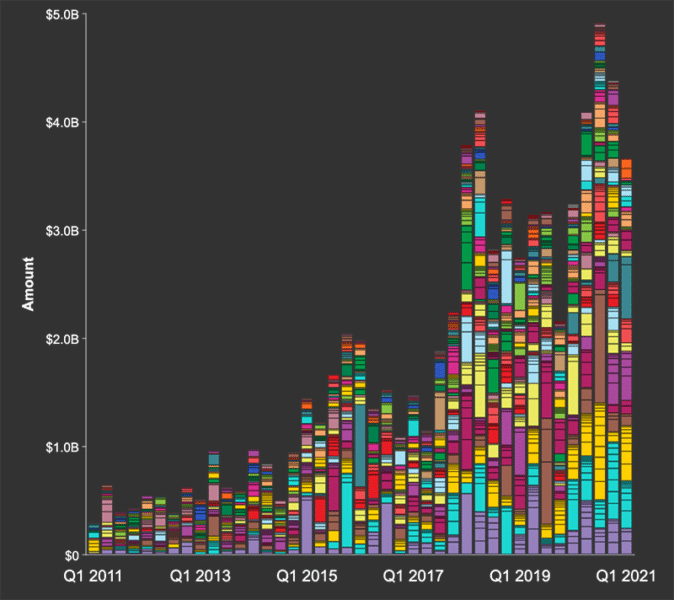
Screenshot from NetBase Quid
Strategically select potential targets for due diligence based on key business metrics, including investments, IP applications, earnings call analyses, brand reputation and product reviews. Track partnership and R&D movements in your market and anticipate competitors’ movements with cross-channel analyses using custom data sets – an integral element of social listening.
Competitive Intelligence –
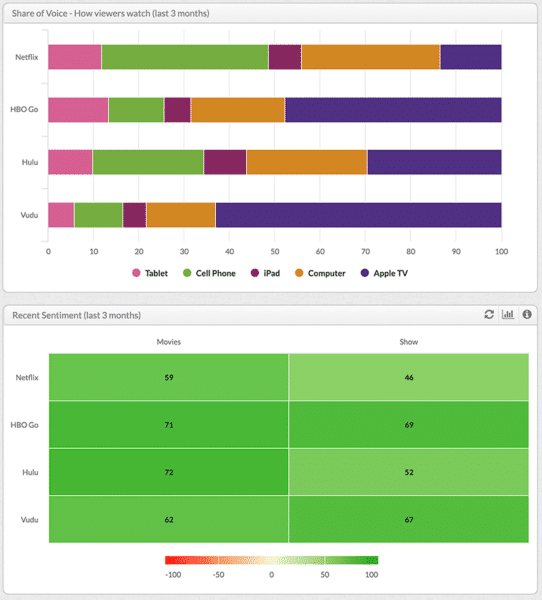
Screenshot from NetBase Quid
With so much competitive intelligence at your fingertips online, making sense of the noise is challenging. Brands use social listening to capture and make sense of every bit of it in relation to their efforts by benchmarking share of voice, key storylines and events resonating in the media, net sentiment, brand passion, new products, investment priorities, consumer segments and loyalty drivers. They also use it to inform organizational improvements and learn from competitor’s mistakes.
Crisis Management –
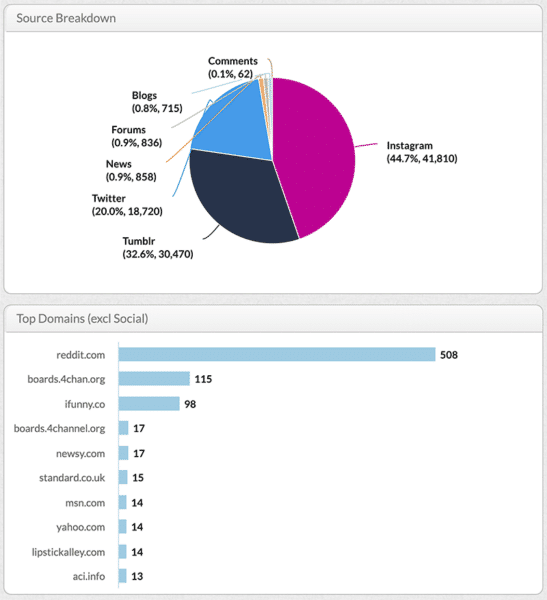
Screenshot from NetBase Quid
Identify problems before they spiral and take targeted action with the right messaging, speaking to the right audience and on the right platform. Quickly understand the velocity and magnitude of an event to design an appropriate response to minimize risk to brand reputation. Also, have brand ambassadors available to activate and assist with amplifying key messaging discovered using social listening.
Voice of the Customer –
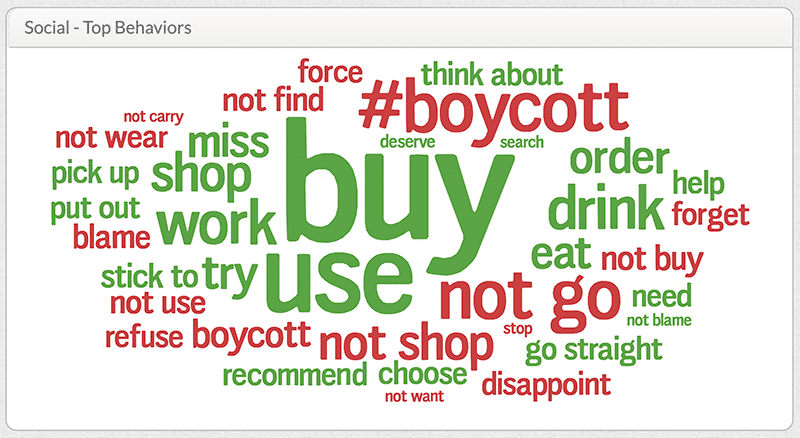
Screenshot from NetBase Quid
Customers will not always tag brands when talking about them. Most times they aren’t mentioning you at all. Aggregate and analyze all sources of customer experience data, including social web, propriety call log captures and every source of feedback with social listening to better understand their attitudes, preferences and expectations throughout the customer journey. Reveal purchase path indicators to drive loyalty and identify additional target audiences and prospects.
Influencer & KOL Marketing –
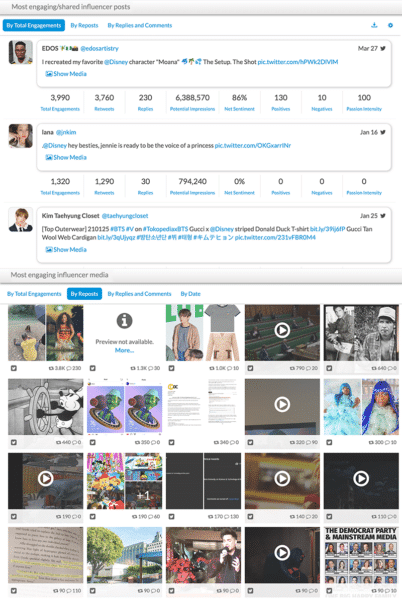
Screenshot from NetBase Quid
We know consumers trust their peers and fellow consumers when making purchase decisions, so identifying and building relationships with potential brand advocates, including micro-influencers, is key. And then Key Opinion Leaders hold sway over entire categories and impact the stock market, so monitoring what they have to say via social listening is critical.
Technology Scouting –
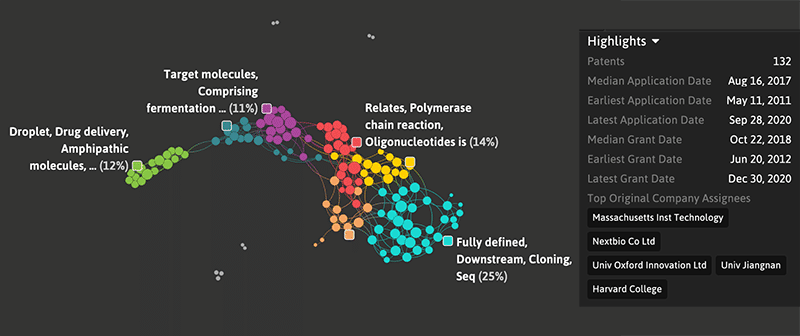
Screenshot from NetBase Quid
Combining strategy, research, and innovation, brands monitor interactive data visualizations for disruptive technologies. Company profiles and patent application data sets reveal specific opportunities and niche trends that others may miss if they aren’t utilizing social listening.
How to evaluate social listening options out there
Massive amounts of structured and unstructured data find its way online every day, and most of it is unstructured insight shared by consumers. This being the case, having confidence in your social listening tool’s accuracy is very important. It’s the entire point of using a tool to aggregate and analyze data for you, after all. So, although ‘speed to insight’ is often the ‘make or break’ differentiator when it comes to social listening tool selection, if you read reviews citing accuracy problems, reconsider. You’ll also want to ensure the tool offers:
- Intuitive query creation and reporting
- Deep query segmentation and the ability to save these analyses
- Historical data capabilities limited only by what social channels allow
- Complete news, imagery and social web data captures to inform accurate decision-making
- Sampling capabilities that are clearly defined and offer the same level of accuracy
- Rapid, real-time (or as near real-time as possible) insight
There are so many amazing ways to connect meaningfully with consumers – ways to connect personally even and at scale. However, it requires an in-depth understanding of who they are beyond the predefined marketing personas that too many brands still rely on. And as your consumers’ values shift, your brand must turn into that curve as well or drive off the cliff. Social listening keeps your wheels on the road as it scans the landscape for relevant intel – displaying it on your dashboard to inform your direction. Without it, you’re driving blind.
The post Social listening for brands and agencies: What, why and how? appeared first on Search Engine Land.
Source: IAB

